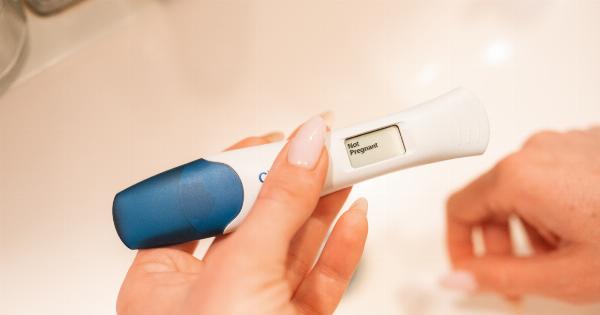As the temperature drops and winter sets in, it’s important to be aware of the increased risk of stroke.
While strokes can happen at any time of the year, studies have shown that the colder months bring about certain conditions that make individuals more susceptible to this life-threatening medical event. In this article, we will explore the various factors that contribute to the heightened risk of stroke during the winter season and discuss preventive measures that can be taken to minimize this risk.
1. Increased Blood Pressure
Cold weather causes blood vessels to constrict, leading to a rise in blood pressure. Higher blood pressure can strain the arteries and increase the likelihood of a stroke.
It’s essential to monitor blood pressure regularly during winter and consult a healthcare professional if it consistently remains high.
2. Seasonal Affective Disorder (SAD)
Winter often brings shorter daylight hours and less exposure to sunlight.
This reduction in sunlight can lead to Seasonal Affective Disorder, a type of depression that can contribute to unhealthy lifestyle choices such as overeating, lack of exercise, and increased alcohol consumption. These factors can increase the risk of stroke.
3. Sedentary Lifestyle
Cold weather and winter conditions can make outdoor activities less appealing, leading to a more sedentary lifestyle. Lack of physical activity can contribute to weight gain, high blood pressure, and other risk factors for stroke.
Finding indoor exercises or activities can help maintain fitness levels even during the winter months.
4. Respiratory Infections
Winter is notorious for respiratory infections such as the flu and colds. These infections can lead to inflammation and can increase the risk of stroke.
Maintaining good respiratory health by practicing proper hygiene, getting vaccinated, and seeking medical attention when necessary can help reduce the chances of stroke.
5. Dehydration
Many people associate dehydration with hot weather, but it is equally important to stay properly hydrated in cold climates. Cold air can be dry and dehydrating, and people tend to drink less water during the winter months.
Dehydration thickens the blood and makes it more prone to clotting, increasing the risk of stroke. It is crucial to stay hydrated by drinking enough fluids throughout the day.
6. Increased Blood Thickness
In colder temperatures, the blood tends to thicken. Thickened blood is more likely to form clots, increasing the risk of stroke.
It is important to consult with a healthcare professional about any necessary adjustments to medications that affect blood thickness during the winter months.
7. Poor Diet Choices
Winter holidays and festivities often involve indulgent food and drink choices. Overconsumption of fatty, high-sodium, and sugary foods can lead to weight gain, high blood pressure, and increased cholesterol levels.
These factors significantly contribute to the risk of stroke. Making conscious, healthy food choices can minimize the negative impact on cardiovascular health.
8. Increased Alcohol Consumption
The holiday season often comes with an increase in alcohol consumption. Excessive alcohol intake raises blood pressure and can contribute to additional risk factors for stroke, such as atrial fibrillation.
Moderation is key; it is crucial to limit alcohol consumption to minimize the risk of stroke.
9. Shoveling Snow
Winter also brings the responsibility of clearing snow, particularly for those living in snowy regions. Shoveling snow is a physically demanding activity that can lead to a sudden increase in blood pressure and heart rate.
People with preexisting heart conditions are more vulnerable to the strain of shoveling snow. Taking breaks, using proper techniques, and seeking help when needed can help prevent stroke caused by overexertion during snow removal.
10. Ignoring Warning Signs
During the winter season, people may be more likely to dismiss or ignore the early warning signs of stroke.
The cold weather could lead to confusion, attributing symptoms such as slurred speech or numbness to the cold rather than seeking immediate medical attention. It is crucial to be aware of the warning signs of stroke and not delay in getting medical help when they occur, regardless of the season.
Conclusion
While stroke is a risk throughout the year, the winter season brings about unique factors that increase susceptibility.
Awareness of these risk factors, such as increased blood pressure, sedentary lifestyles, and poor dietary choices, can help individuals take proactive measures to reduce the likelihood of stroke. Staying physically active, maintaining a healthy diet, staying hydrated, and seeking medical attention promptly when necessary are essential steps for stroke prevention.
By being informed and taking necessary precautions, we can ensure a healthier and safer winter season.






























